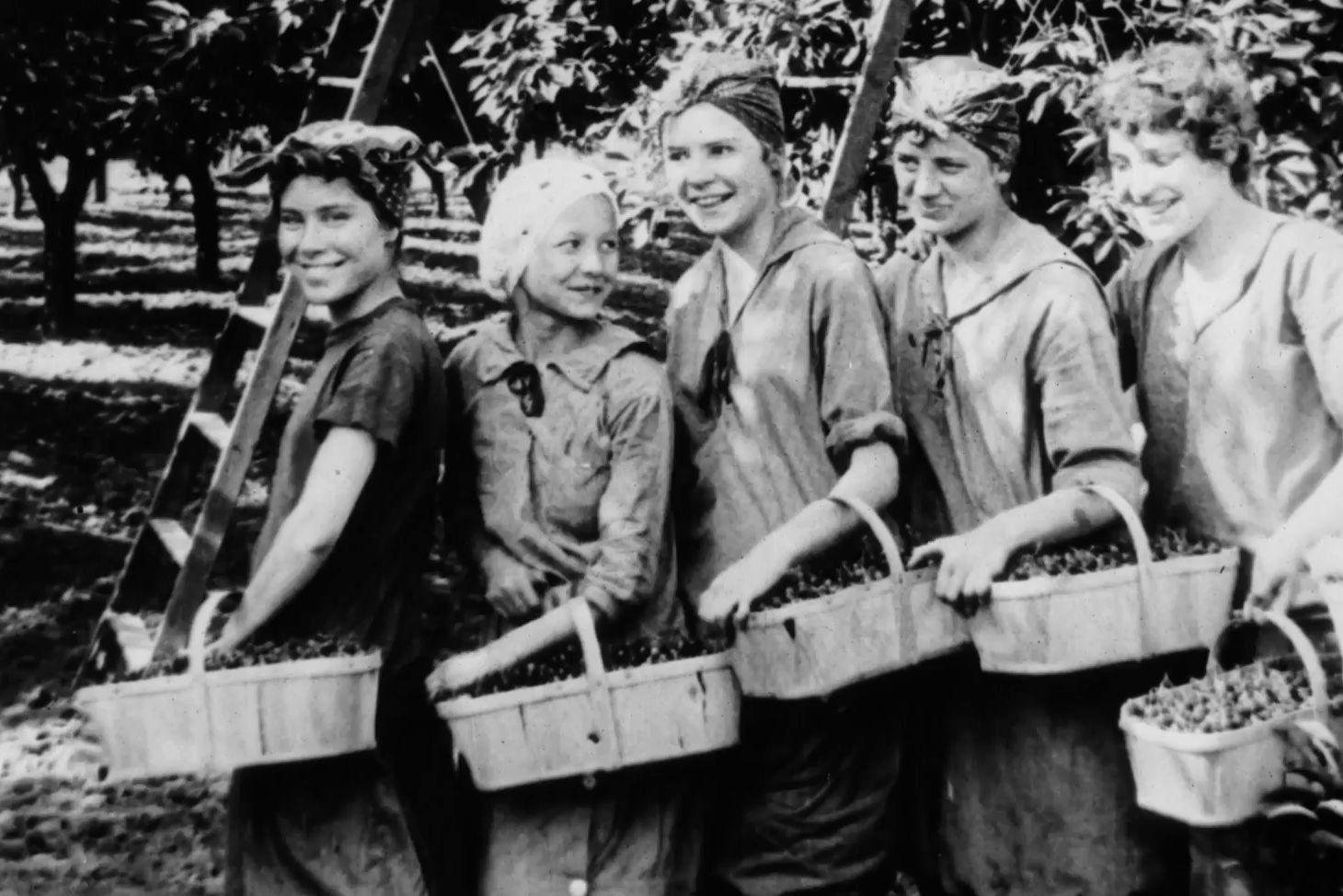Sources for Labour History
Made between 1918 and 1929, these Canadian films are a useful resource for historical research and teaching. They also complement other primary sources. Widely viewed and popular with the public at the time, they are useful for understanding how perceptions and perspectives were influenced and constructed.
This specific Library and Archives Canada film collection is significant, exceeding 1,000 films. Their subjects are diverse and will be of interest to labour and social historians; better farming techniques, celebrations of industrial technology, scenic vacation spots for the leisure class and appropriate workplace behavior, are just some subjects addressed by the films in the collection. More detailed descriptions of each film can be found here
Curating the Films
Music has been added to what were silent films and they have been edited for length to suit contemporary viewing. However, no scenes were omitted, and the narrative sequence of each film is unaltered. Two approaches were used regarding music. All but one of the films selected and edited in 1993, have commissioned music. The other nine films, most selected more recently, feature period music from the 1920s, synced to the visual narrative.
The Films and the Motion Picture Bureaux
The films featured on The Moving Past website were produced by the Ontario Motion Picture Bureau, (OMPB) formed in 1917 and the Canadian Government Motion Picture Bureau, (CGMPB) created in 1918. (called Exhibits and Publicity Bureau prior to 1923).
The Exhibit and Publicity Bureau, the federal entity, was created through an Order-in-Council. Part of the Trade & Commerce Department, it was to “to advertise abroad Canada's scenic attractions, agricultural resources and industrial development." Its films were also screened widely in the United States, at, for example, scientific and industry conferences throughout the 1920s.
The OMPB films were “educational work for farmers, school children, factory workers and other classes", and to “give instruction in all branches of agriculture, etc., fruit growing and advertise the resources of the province and to encourage the building of highways and other public works, and other subjects if made more useful with motion pictures.”
The films of both motion picture bureaux were shown at venues like the Canadian National Exhibition (CNE), country fairs, classrooms, churches and movie theatres. Any group could borrow any OMPB film at no charge except for the transportation costs.
These were the first state-sponsored film organizations in the world. Demand for Canadian-made newsreels about Canada’s troops overseas alerted authorities that audiences were interested in viewing Canadian content. The American film industry’s influence and quick development was also a concern. Millions of dollars were being spent importing American films.
World War One had a profound and long-lasting impact on Canadian society. Fundraising and war bond drives used film to motivate their audiences. Their effectiveness did not go unnoticed. As the war ended, large numbers of veterans returned home. Many were re-deployed in agriculture and industry. The films played an instructional role in their re-integration. These productions served as introductions to various forms of work for the public as well. They were tools for socialization, as well as entertainment. “It was the duty of every Canadian” declared the Globe, “to see these wonderful pictures about their very own Canada.”
The narratives in these educational films avoided overt discussions of politics. Unions are invisible in films that feature industries where unions were militant and active. Similarly, protests of any kind do not appear, yet in their absence, they have much to say about them.
Screenings for school-age children were arranged widely. Horace Brittain, Director of Municipal Research predicted in 1920 that “in 25 years there would not be a public school in the country which has not its motion picture machine” and there won’t be one teacher who is unable to run it” Brittain announced, “There will be “text-films” as well as “text-books”.
After 1925 the CNE featured a special venue in which to view these films. Five thousand people a day saw the Ontario Bureau films in 1929. The Chair of the OMPB noted in 1930 that film “as an agency of instruction was beyond compare” and “you can get more in a motion-picture in ten minutes than you could say in class in an hour.” Advocates observed that between 200 to 400 students could watch the films at a time, and they were very well behaved. This industry, it was noted “has a great potentiality.”
The motion picture bureaux were examples of a shift in cultural production, along with recorded music and radio broadcasting, both of which expanded dramatically. The state sought to influence how viewers thought about issues directly, through the choice of subject matter. Audiences were also affected through the messages, imagery and ideology that was germane to their content.
Both bureaux had invested in technology designed for silent filmmaking. The CGMPB faded away by the mid-1930s, as ‘talkies’ began to dominate the marketplace. The National Film Board was created in 1941. The OMPB was abruptly closed in 1934 by the Hepburn Government as a cost-cutting move. All the films and records of the Bureau were ordered destroyed, so it is somewhat miraculous that they survived at all. They were stored in a barn near North Bay and discovered thirty years later.
Donating
More films will be added to the site each year. Click here to donate.
Six trailers provide a peak at the films click here to view film trailers


